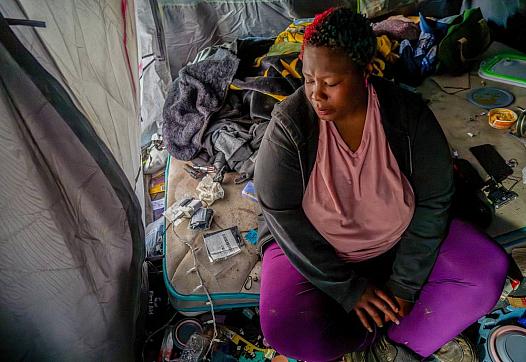30% jailed in Sacramento County are homeless. ‘Our lifestyle shouldn’t be illegal’
The story was originally published by the The Sacramento Bee with support from our 2024 Data Fellowship.

Elizabeth Williams sits inside her tent in South Natomas on March 19. Williams said that when the Sacramento police took her to jail in February, they threw away her ID, debit card, Social Security card and birth certificate. “I did my taxes back in January,” she said. “I can’t get my refund now because I got no ID.”
RENÉE C. BYER rbyer@sacbee.com
Elizabeth Williams didn’t want any trouble with the police. She also didn’t want to freeze to death, so she left her tent up overnight. As temperatures dropped into the 40s, she bundled up under her blankets.
The deadline to move the camp was the next day; she could pack the tent away in the morning, she thought. The cops had told her the encampment where she lived was being “swept,” and she was doing her best to comply. Most of her belongings, she and two neighbors said, were already in storage bins.
On the morning of Feb. 24, officers returned to the campsite. She and her neighbors recalled they were unhappy to see her tent wasn’t folded up yet. Williams, 37, thought she’d get a talking to, maybe a ticket.
Instead, they arrested her and took her to jail for storing her personal property in public. It was before 8 a.m., and Williams hadn’t even put her shoes on yet. She climbed into the cruiser and went to jail barefoot.
She was stunned. Later, she thought about the cost for police to escort her from South Natomas to the Main Jail downtown, the cost of her eight hours or so behind bars, the cost of the encampment cleanup that trashed almost all her possessions, including her tent, the spices she used to cook meals for her loved ones every night and her dogs’ kennels. Court records show that police said she committed two misdemeanors: storing her personal property on public property and obstructing a sidewalk
In her view, it was “a waste of taxpayer money.” It was also the second time it had happened in six weeks: On Jan. 14, Williams got hauled to jail because she lives outdoors. A friend who lives in a tent nearby, Regina Camacho, said she, too, went to jail in February for unlawfully camping.
“Our lifestyle shouldn’t be illegal,” Camacho said. “None of us want to be out here.”
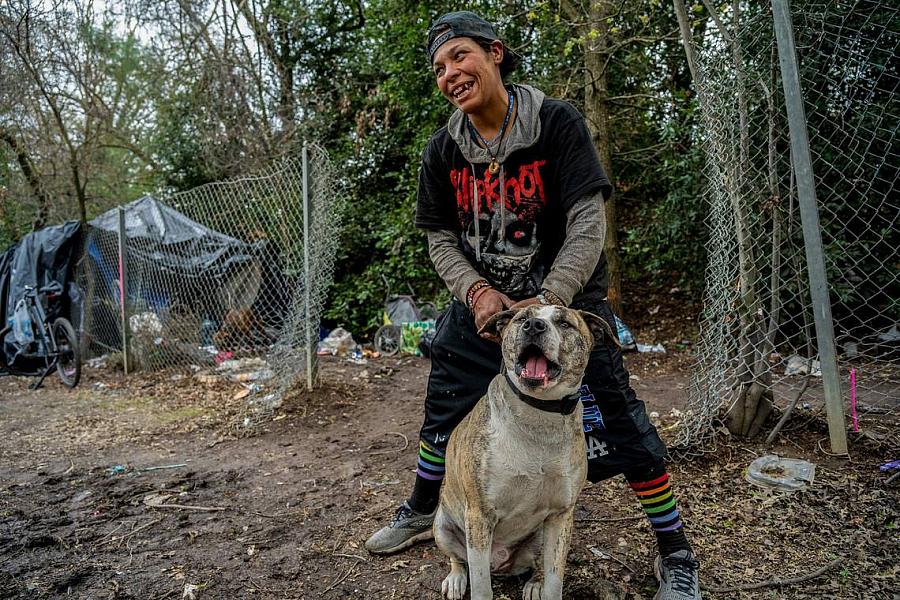
Regina Camacho, 41, holds her dog Goliath at her encampment on March 19 in South Natomas. She said she had been arrested in February and jailed for eight hours. Her dogs were thankfully safe with a friend, she said. “They threw away all my tarps, my blanket, my tent — didn’t have anything eight hours later when I got out of jail, but I had my dogs,” she said. “Now I’ve got a record — a misdemeanor, and homelessness and stuff — and I spent 41 years keeping my record clean. I was proud of that.”
RENÉE C. BYER rbyer@sacbee.com
What data show
In March, Sen. Sasha Pérez, D-Pasadena, introduced a bill that would prevent prosecution over homeless-related offenses. But as that works its way through the Legislature, the arrests continue.
Data show that at least two law enforcement agencies in the county — the Sacramento Police Department and the Sacramento County Regional Parks Rangers — have stepped up arrests over camping since June 2024, when the U.S. Supreme Court ruled such punishment was legal. These arrests are part of a much larger problem: Public records show that more than 700 homeless people are arrested each month on a variety of charges that are, a county official said, often tied to homelessness itself, even when they’re not directly related to camping.

Elizabeth Williams pushes her bicycle past a hole in a fence as she heads out on March 26 to get groceries to cook dinner at the same homeless encampment in South Natomas where she was arrested in February and jailed for a day.
RENÉE C. BYER rbyer@sacbee.com
A year’s worth of data released by the Sacramento County Department of Health Services show that one-third of people entering the jail in the county do not have a home.
Incarcerating a homeless person is one of the most expensive ways to house them. The Sacramento County Sheriff’s Office said that its average daily cost for housing an inmate was $199.73 — not including any medical expenses or the cost of law enforcement transporting people to the jail and waiting around. If each booking of a homeless person resulted in a 24-hour stay, that would cost the county more than $2.1 million a year.
The costs go further. A stint in jail — even a short one — can destabilize an already unstable life. The sweep in January destroyed Williams’ ID, her birth certificate and her Social Security card. Williams needed her documents for her application for a Section 8 housing voucher, which she hopes can help her afford an apartment so she can finally get off the streets. She had to return to a nonprofit to get the workers there to help her request new documents, which was another expense indirectly covered by taxpayers. She had to acquire a new tent, new blankets, new food for her dogs. The city-run Front Street Animal Shelter gave her new kennels and leashes. When she was arrested again in February, the cycle continued.
Currently, the county has essentially no services for people exiting the jail with nowhere to go. Williams wasn’t offered help, either.
“No,” she said. “They offered me a court date.”
And among people who are already living in poverty, jail time can nudge them into homelessness.
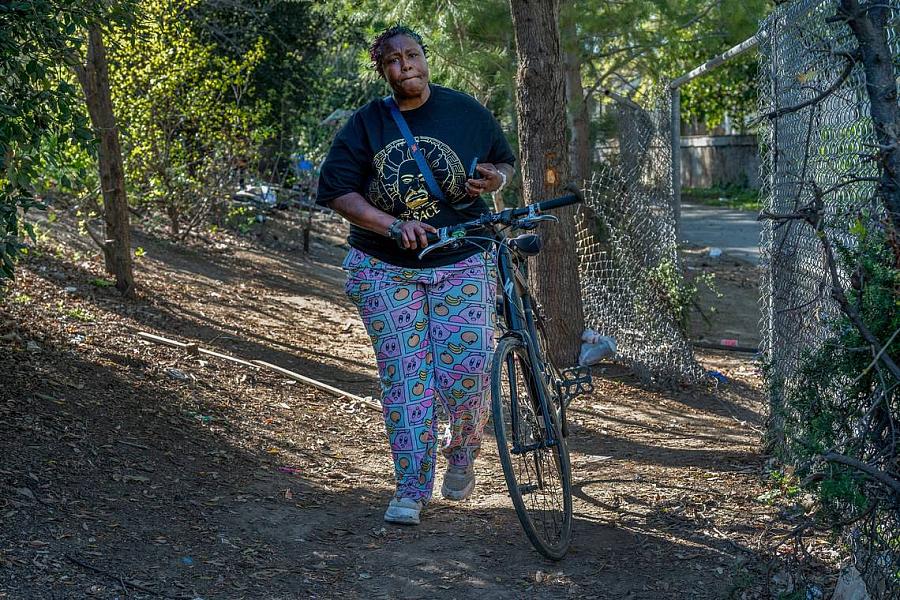
As the sun goes down in South Natomas, Elizabeth Williams stirs a fire before deep-frying dinner for fellow homeless campers on March 26. “I actually want to open up my own business called J&J’s Homeless Bar and Grill,” she said. “I want to open up a restaurant, so I’ve been looking into trying to go back to school and get my GED.”
RENÉE C. BYER rbyer@sacbee.com
Many homeless people face a revolving door to jail
There are, county staff wrote in a 2023 grant application, “critical gaps in services” for homeless people leaving the jail. A representative for the sheriff did not respond to multiple requests for a comment. However, about 10,000 times each year, the application says, the Sacramento County Sheriff’s Office releases people into homelessness.
Getting people into community-based services would save money, county staff wrote, and “reduced incarceration costs” could be funneled back into those services. The California Board of State and Community Corrections agreed with the argument and awarded an $8 million grant to the county for its Reentry Opportunities and Access to Resources or “ROAR” program — a coordinated effort to intercept people before they’re released from jail and make sure they’re offered homelessness services.
ROAR is scheduled to “go live” July 1, and so for now, such a program does not exist. In the more than half of releases that occur within three days — and the 33% that occur in less than a day — homeless people often receive nothing: no hotel voucher, no bus pass, no ride to a shelter, and, Williams said, no shoes if they need them.
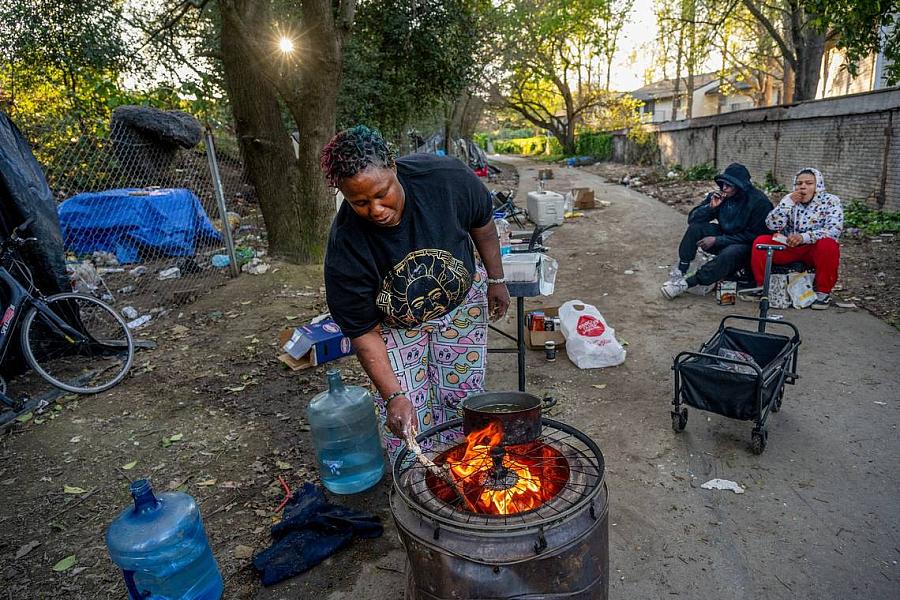
As the sun goes down in South Natomas, Elizabeth Williams stirs a fire before deep-frying dinner for fellow homeless campers on March 26. “I actually want to open up my own business called J&J’s Homeless Bar and Grill,” she said. “I want to open up a restaurant, so I’ve been looking into trying to go back to school and get my GED.”
RENÉE C. BYER rbyer@sacbee.com
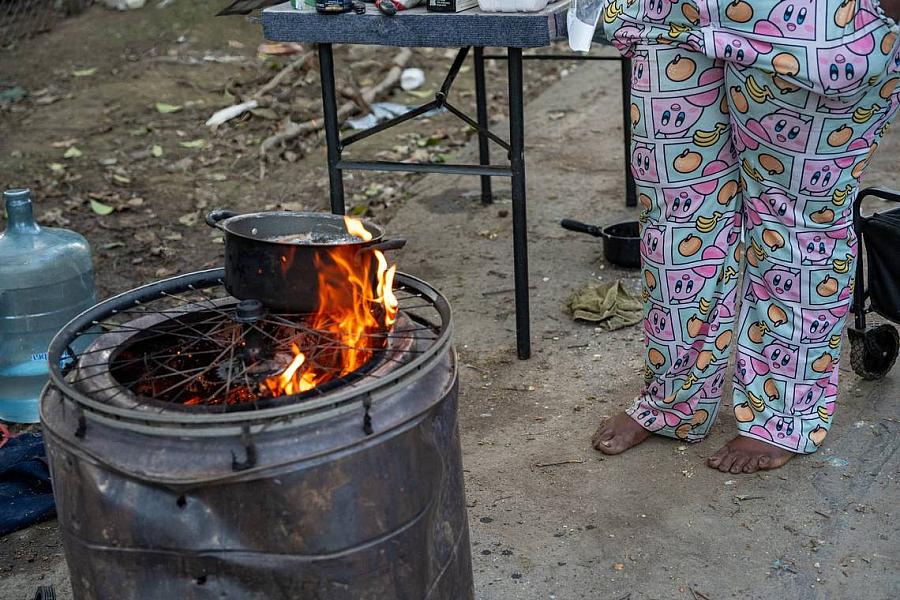
Elizabeth Williams cooks dinner for her encampment barefoot on a makeshift grill on March 26 in South Natomas. She said that when Sacramento police took her to jail in February it was cold and raining and that she hadn’t even put her shoes. Once she was released, she had to walk back to her encampment barefoot. Most of her belongings were trashed during the sweep and she is slowly acquiring new things.
RENÉE C. BYER rbyer@sacbee.com
Meanwhile, arrests are increasing. Data from two local police agencies shows that arrests for “unlawful camping” have gone up since the Supreme Court ruled in Grants Pass in June. Previously, a lower court had said that punishing people for living outside when they had no alternative was illegal because it constituted cruel and unusual punishment; the Supreme Court overturned that decision.
In doing so, the court cleared the way for police to begin detaining more homeless people, and the Sacramento Police Department took notice. In 2024, citation data show that police officers made three arrests related to camping citations in January; they did not make another arrest related to camping until July, one month after the Grants Pass decision came down. From July through December, they made 45 arrests that involved camping. Similarly, data show that they made 23 arrests in 2024 for storing personal property outside. All but three of them took place after June.
Not every arrest necessarily leads to a jail booking, but some do. A police spokesperson said that citations precede a camping arrest, and added, “When determining when to arrest vs. cite vs. warn, officers take into account the totality of the circumstances including the crime committed and a variety of human and environmental elements.”
The Sacramento County Regional Parks Rangers, who patrol the American River Parkway, ramped up arrests on homeless-related offenses, too. Monthly summaries published by the agency show no arrests for camping between October 2023 and October 2024. In November 2024, they made 45 arrests for “prohibited camping.” In December, they made 62 arrests.
Ken Casparis, a spokesperson for the department, said Grants Pass did not prompt a formal policy change, but that “we have simply exhausted other available options for abating encampments.” Most people, he said, received warnings before the arrests. A spokesperson for the Police Department said, similarly, that people usually receive warnings: “If a person is in violation of ordinances including unlawful camping, sidewalk obstruction or unlawful storage, they would first receive a citation,” the spokesperson said. “If they have outstanding warrants for other charges, they would likely be taken into custody.”
These arrests don’t account for a majority of more than 700 homeless individuals who ended up in jail each month between October 2023 and November 2024: Booking data released by the Sheriff’s Office for that period shows only 62 charges under camping ordinances, three-quarters of which were made under Sacramento’s City Code. But Timothy Lutz, director of the county’s Department of Health Services, said that just living outside increases a person’s risk of arrest on other charges by making encountering an officer more likely. And as various law enforcement agencies in the county are sending more homeless people to jail, Lutz’s department has been working to keep them from returning to jail.
He described a “cycle of recidivism” that occurred with many homeless people, who were continuously re-arrested on low-level charges. Some of that, Lutz said, was because being homeless makes it much more difficult for people to solve any problems in their lives, including struggles with addiction or mental health that may lead to interactions with police which in turn may lead to arrest.
“Whether they’re coming in for drug charges or theft, other types of lower-level crimes, I think that’s where we see this intersection (of homelessness and incarceration),” he said. “And we know from self-reports with the unsheltered population, drug use in a lot of cases is for people to stay alert in the middle of the night.”
The Department of Health Services effort, however, is only focused on those being released from jail; no component attempts to stop the first arrest, said county spokesperson Elizabeth Zelidon. “Our focus is on connecting people with immediate support services upon release,” she said, “and offering continued care coordination for up to 90 days.”
Though medical staff collect information on homelessness, the Sacramento County Sheriff’s Office does not monitor this among the jail population in any systematic way.
Sheriff’s Office attorney Diane Vasquez wrote regarding a Public Records Act request from The Sacramento Bee that the law enforcement agency “does not track an arrestee’s housing status.”
But with 10,548 county bookings that involved a homeless person over the course of a year, it’s critical, Lutz said, for the county to help people stay out of jail by helping them toward stable housing.
“If we don’t address basic needs — safety, security, shelter — it’s really difficult to get people to successfully engage for some of the higher-level type of work, like mental health treatment, substance use treatment,” Lutz said. “We see this as a really strong way for us to try and address recidivism by offering some housing supports.”
Williams knew this firsthand. When she was released from a jail stint in 2014, she immediately fell into homelessness. She hasn’t had a permanent place to live since.
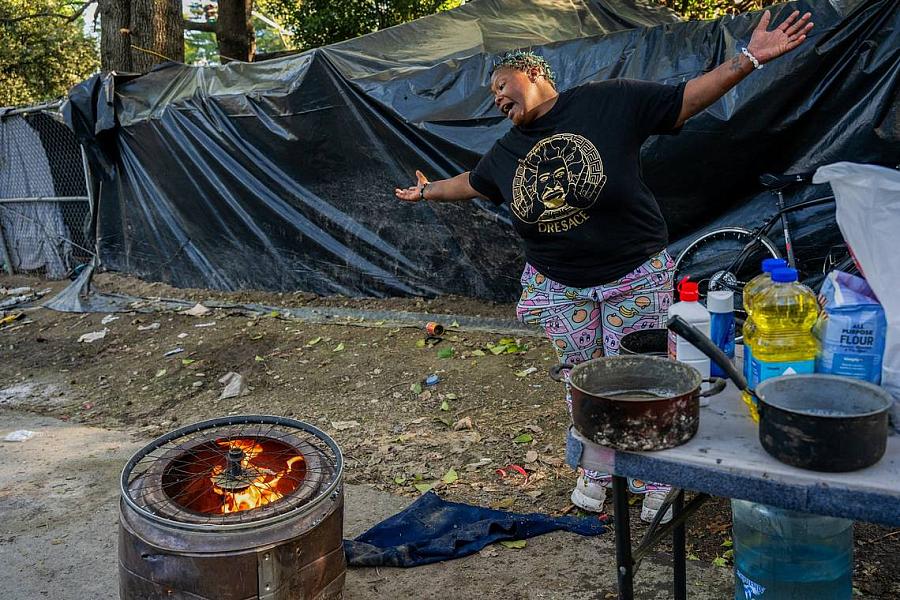
Elizabeth Williams uses a bicycle wheel for a makeshift grill to cook dinner for other homeless members of her encampment on March 26 in South Natomas. When she was arrested and placed in jail in February, the police threw away her gas grill and all her belongings. “They took everything we got,” she said.
RENÉE C. BYER rbyer@sacbee.com
Jail can lead to homelessness in Sacramento
Williams was facing a drug possession charge for methamphetamine when she was arrested and jailed on June 9, 2014, on charges of child neglect and abuse. The court documents explain that she left her son with a woman she was staying with — the woman claimed that, although Williams was staying in the garage, they were strangers. Williams said she and the woman knew each other. Court records show the department recommended terminating family reunification services for Williams six months later, in January. Child Protective Services records provided by Williams show she moved into a tent upon her release from the Sacramento County Main Jail.
Williams sent records from the jail to the county which show she was steadily attending parenting classes, Narcotics Anonymous meetings and another sobriety group while in the jail.
The records show her repeated attempts to figure out what she needed to do to stay sober and regain custody of her son. “I have 34 days left before my release,” she wrote to a county social worker in a letter dated Sept. 26, 2014. “Is there any way possible you can come see me so we can talk about what I need to do to get me back with my son and make sure I stay on track.”
When she got out, however, she said she received no services. She took responsibility for her own choices, but she still grieved for her younger self and her son, who was adopted a few months after her release from jail.
As Lutz might have predicted, she fell back into addiction and only began to recover in the last several years. Williams is now in outpatient substance use treatment and attending therapy. She’s applied for a housing voucher, and she receives Social Security income — not enough to cover rent, but enough to supplement her expenses. Williams desperately wants to find an apartment, but with no rental history and a fixed income, she’s been working with nonprofits to try to make something work.
Though she’s rejected offers of temporary shelter — largely because she has four beloved dogs, which is more than shelters typically allow — she has otherwise done “everything they want me to do.” Court documents show that a homeless outreach specialist at Hope Cooperative wrote that Williams was “actively working toward housing placement.”
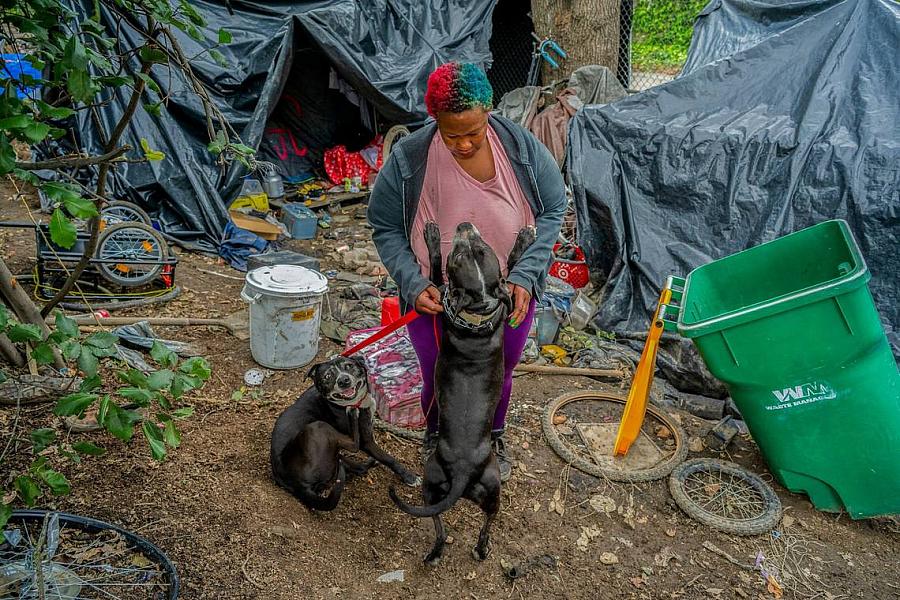
Elizabeth Williams, 37, pets Brandi Mae as Harley Quinn sits beside them outside her tent on March 19 in South Natomas. Williams has four dogs, which she said are all now registered as emotional support animals, and she hopes this will help her get housing. She said that when the police came and saw the dogs were friendly, she realized she would be arrested — because they couldn’t protect her.
RENÉE C. BYER rbyer@sacbee.com
The arrests, Williams said, just made her already complicated life harder. And she couldn’t understand the point: Court records show that the charges against her were dismissed by a judge in March.
Williams was part of a growing problem that one arm of Sacramento County government was attempting to solve while, at the same time, various law enforcement agencies sought to put more homeless people in jail. On March 19, after her two arrests, she was still living on the streets with a small group of friends and her boyfriend, James Loudon, all nestled under the same stand of trees near Interstate 5.
The encampment had not moved. She was still hoping her housing voucher would be approved.
“I’m just,” she said, “in the waiting-limbo game.”
Though the broad strokes of her life were the same, her encounter with the criminal justice system did lead to a few small changes. That night, she would sleep in the second tent she’d acquired since her first camping arrest in January, wrapped in the new blankets she ordered off Amazon.


